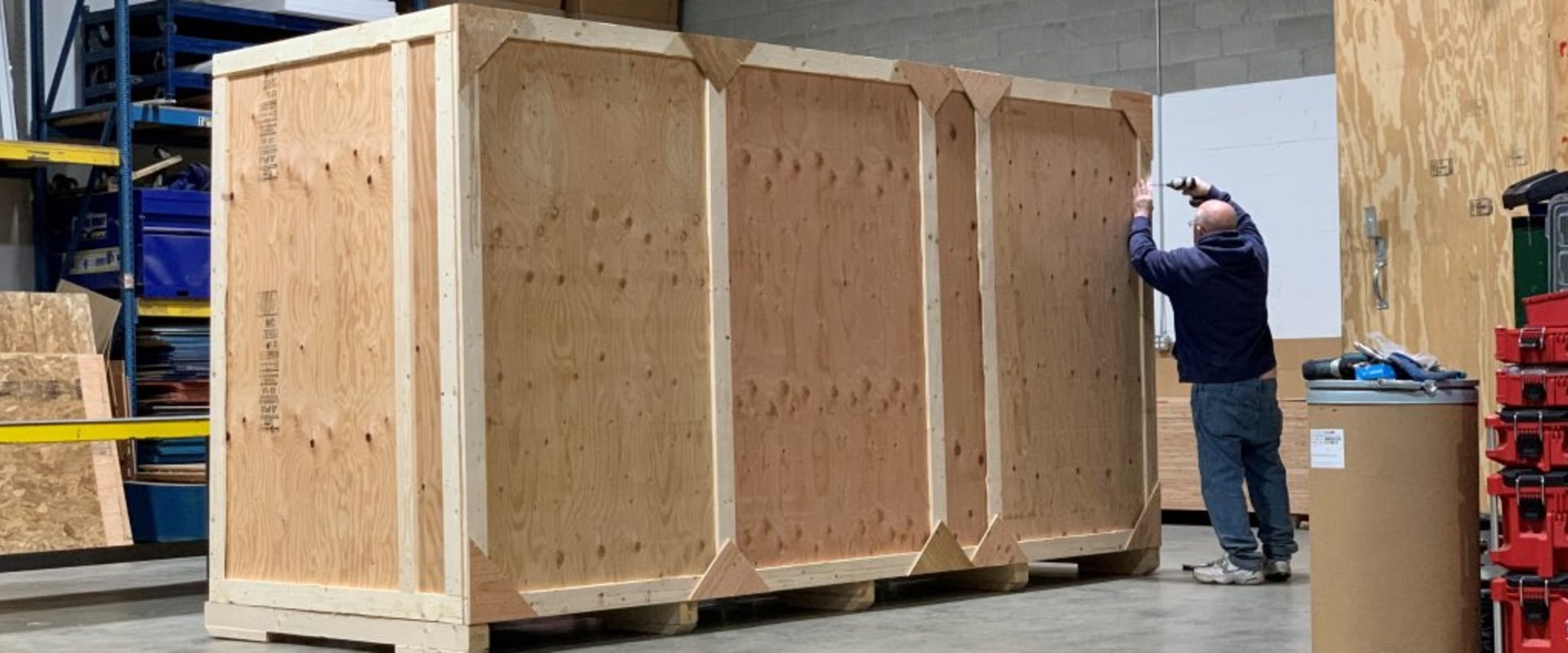When it comes to shipping and logistics, one aspect that is often overlooked is the importance of proper crating for long distance transport. Many businesses and individuals may focus on finding the most cost-effective shipping option, but neglect to consider the crucial role that proper crating plays in ensuring the safe and timely delivery of their goods. Whether you are shipping across the country or across the world, the journey can be rough and unforgiving for your goods. Poorly packed or inadequately protected items are at risk of damage or even complete loss during transportation.
This is where crating comes into play, providing a sturdy and secure enclosure for your items to withstand the rigors of long distance transport. In this article, we will delve into the importance of proper crating for long distance transport and how it can make all the difference in ensuring a successful delivery. From discussing the key factors to consider when choosing a crating option, to highlighting the benefits of investing in quality crating materials, we will cover all aspects of this essential step in the shipping process. If you want to ensure that your goods arrive at their destination unscathed and on time, then keep reading to discover why proper crating is a crucial aspect of any shipping and logistics plan. First and foremost, it is important to understand the purpose of crating.
The primary function of a crate is to protect the contents inside during transport. This includes providing structural support, preventing damage from external forces, and keeping the items secure within the crate. To achieve this, there are several key elements that should be considered when creating a crate. The first is the material used.
Wood
is the most commonly used material for crates due to its strength and durability.However, there are other options such as plastic or metal crates, which may be more suitable for specific types of items or transport methods. It is important to carefully consider the material based on the size, weight, fragility, and value of the goods being transported. Another important aspect is the design of the crate. It should be custom-built to fit the specific dimensions of the item(s) being shipped, with enough room for padding and cushioning materials. The crate should also have proper ventilation and drainage to prevent moisture buildup, which can cause damage to the contents. In addition to the materials and design, proper cushioning is crucial in protecting items during transport.
This can include foam inserts, bubble wrap, packing peanuts, or other materials that provide shock absorption and prevent movement within the crate. The amount and type of cushioning will depend on the fragility of the items being shipped. Proper labeling and marking of the crate is also important for long distance transport. This includes indicating the contents, any handling instructions, and the destination address. This will help ensure that the crate is handled correctly and reaches its intended destination.
Proper Labeling and Marking
Why is Proper Labeling and Marking Important?When it comes to long distance transport, proper labeling and marking on crates is crucial for a number of reasons.First and foremost, it helps to identify and track the items being shipped, ensuring that they are delivered to the correct destination. This is especially important for items that require special handling or have specific delivery instructions. Additionally, proper labeling and marking can also serve as a way to communicate important information about the contents of the crate. This can include details such as the fragility of the items, proper handling instructions, and any potential hazards that may be present. This not only helps to ensure the safe delivery of the items, but also protects those who are handling them.
What Information Should be Included?
There are several key pieces of information that should be included in the labeling and marking of crates for long distance transport.These include:
- The destination address and contact information
- The contents of the crate
- Handling instructions or any special instructions for delivery
- Fragile or hazardous warnings
Cushioning for Protection
When it comes to long distance transport, cushioning is crucial for protecting items from damage. The right cushioning can provide a barrier between the item and any potential impact or shock during transit. There are various cushioning options available, and the best choice will depend on the type and fragility of the item being transported. Some popular options include bubble wrap, foam inserts, and packing peanuts. Bubble wrap is a lightweight and versatile cushioning material that provides excellent protection against impact and vibration. It is ideal for wrapping items of various shapes and sizes, and its air-filled bubbles act as shock absorbers. Foam inserts are another popular choice for protecting items during transport.They are customizable and can be molded to fit the shape of the item, providing a snug and secure fit. Foam inserts also offer excellent shock absorption and are commonly used for fragile items such as electronics or glassware. Packing peanuts, also known as loose fill, are small polystyrene foam pieces that can be used to fill empty spaces in a box or crate. They provide cushioning and prevent items from shifting during transport, reducing the risk of damage. It is important to carefully consider the cushioning material when preparing items for long distance transport. Properly cushioned items are less likely to be damaged during transit, ensuring they arrive at their destination safely and intact.
Designing a Custom Crate
When it comes to shipping and logistics, proper packaging and crating is essential for ensuring that goods arrive at their destination safely and intact.This is especially important for long distance transport, where items may be subjected to a variety of environmental factors and handling methods. In order to protect your items during long distance transport, it is crucial to design a custom crate that meets your specific needs.
Size
The size of a crate is a critical factor to consider when designing for long distance transport. The crate should be large enough to fit your item comfortably, but not too large that it allows for too much movement during transport. This can lead to damage or breakage of the item.On the other hand, a crate that is too small can cause the item to be squeezed and potentially damaged as well.
Ventilation
Proper ventilation is also important when designing a custom crate. Without adequate ventilation, items can become too hot or humid, causing damage or deterioration. However, too much ventilation can also be detrimental, as it can allow for dust or debris to enter the crate and potentially damage the item.Drainage
In addition to size and ventilation, it is important to consider drainage when designing a custom crate. If your item is sensitive to moisture, it is crucial to have proper drainage in place to prevent any potential water damage.This can be achieved through the use of drainage holes or slats in the bottom of the crate.
Choosing the Right Crate Material
When it comes to crating for long distance transport, one of the most important factors to consider is the type of material that will be used. Different materials offer different levels of protection and durability, so it is crucial to choose the right one for your specific items.Wood:
Wood is a popular choice for crating due to its strength and ability to absorb shock and vibrations during transport. It is also relatively lightweight and cost-effective. However, wood can be susceptible to moisture and temperature changes, which may affect the contents of the crate.Plastic:
Plastic crates are becoming increasingly popular due to their durability and resistance to moisture and temperature changes.They are also lightweight and can be easily customized for specific items. However, they may not be as strong as wooden crates and may not provide as much shock absorption.
Metal:
Metal crates are the most heavy-duty option and offer excellent protection for fragile or valuable items. They are resistant to moisture, temperature changes, and impacts, making them ideal for long distance transport. However, they can be expensive and may add extra weight to your shipment, resulting in higher shipping costs. When deciding on the right crate material, it is important to carefully consider the specific needs of your items.If your items are fragile or valuable, metal crates may be the best choice. For items that are less sensitive, wood or plastic may be suitable options. It is also important to keep in mind any environmental factors that may affect the contents of the crate during transport. In conclusion, proper crating is crucial for long distance transport to ensure that goods arrive at their destination in optimal condition. By carefully considering the materials, design, cushioning, and labeling of the crate, you can greatly reduce the risk of damage during transport.
Remember to also follow any specific guidelines or regulations for shipping certain types of items. With these tips in mind, you can confidently ship your goods knowing they are well-protected.



